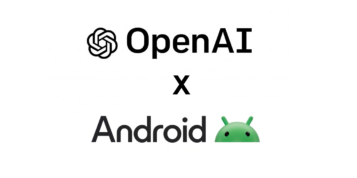It’s not just Netflix, Amazon, and Hulu. Virtually all content (entertainment, news, and information) is on the verge of being “gigged.” What is perhaps the biggest shift in media since cable television, it feels like the right time to redefine many media companies as digital media marketplaces (DMMs).
What is a DMM? At its core, DMMs like Twitch and College Humor identify how media is created and distributed. Whether it’s a song or a magazine or a movie or even a podcast, there is a predictable process. Disney excluded, it’s becoming clearer that there are fewer mega-media dominators and epic movie studios. Media is being created at the grassroots level, and what was once impossible to consider viable media (e.g., streaming video game content) is now potentially and culturally relevant.
Here’s what DMM business models look like.
| Creators | Distribution & Operational Platforms | Benefactors | Revenue Avenues |
|
|
|
|
The Unmistakable Power of DMMs
Certain circles of media lament that no one goes to the movies anymore, that no one buys CDs/records anymore, but the reality is that movie theaters and records stores don’t have the immediacy of streaming bits that you can access from a device in your pocket. Ultimately, content’s role in the media industry is about generating impressions. Unless a film is spectacle enough (such as the aforementioned Disney-level experiences), getting our lazy butts out of our couches and cars to sit in a dark room waiting for a specific time for a movie to start is inefficient. I say this as an avid moviegoer, by the way.
When a tweet can make as much for the tweeter as an indie film, we are living in interesting times. And that’s the potential power that DMMs have.
DMMs also have something that big traditional media doesn’t. Democratization and diversity. Literally anyone with a data plan can be a creator and distribute content. If that content is compelling enough, or it finds its audience, creators will keep making content and benefactors will show up to support it.
Why Call It a Marketplace?
Like the gig economy (Lyft, DoorDash, Upwork, etc.), DMM creators come, sometimes just for one or two projects, and are off again. This transient creativity is natural. In fact, it has been happening since modern recorded media began. When a movie studio makes a film, and you’re sitting there waiting for the end credit scene, consider all the people involved in making the film. Now realize that those “employees” were probably only hired for this one project. It’s a true “gig” regardless of whether they were a W2 or 1099 worker. Similarly, your favorite musician might bring in a drummer and an audio engineer for their next song and that’s the only project they work on together. Collaborative art is made up of informal marketplaces. Technology has formalized it so people can get paid.
What DMMs do is take this model to a new, voluminous digital channel. It happens at a greater scale and with a higher velocity, and it’s as pure a marketplace as Uber, Airbnb, Etsy, or Houzz. Because of this, it has many of the same constructs and issues marketplaces do. The creators are more closely tied to the success of the platform. Top creators are responsible for launching the “killer apps” that people come to check out and hopefully extend their stay.
Challenges Abound
DMMs, even if they’re well-funded, contend with a multitude of challenges that might thwart their success. Building an audience, delivering timely and compelling content, maintaining revenue streams, and staying lean. This last one is actually incredibly meaningful. Audiences begrudgingly pay for content. But they don’t want to “pay” for content platforms. In many ways, DMMs have to operate within the thin profit margins that e-commerce businesses do. Personnel needs to be focused on either driving audiences or helping creators. Back-office operations tend to be heavily automated if possible, and ideally platform-controlled.
Like the gig economy and online marketplaces, DMMs need creators to be suppliers. These are human beings, though, and artists to boot. That requires some delicate hand holding at times by maintaining an enriching, rewarding creator experience. They have to want to create on the platform and have some reason to continue. At the same time, DMMs can’t simply reach out one-on-one to everyone in their supply chain. The platform should take on as much of that effort as possible.
Growth should also be top of mind for DMMs. At a certain point, if a DMM doesn’t grow, the audience begins to languish. The same people end up creating and absorbing the content. There’s no vitality. They need to reach a point where they can self-sustain and still be an important part of the cultural conversation.
The other reason to grow is to prevent being marginalized by Big Content Monetizers (i.e. Facebook, YouTube). If a DMM remains too small, it can’t establish a big enough platform to be sustainable.
DMMs Going Global
Just like Hollywood has started to embrace the international audience, DMMs have a natural affinity towards cross-border entertainment. That’s because if you’re going to create content that’s being distributed on the web, it’s a small hop to offer it to others all over the world and improve your chances that people will watch or listen or read. Why limit yourselves to your own country? After all, if David Hasselhoff can make it in Germany, why can’t anyone?
At the same time, unique voices can also be brought in from locales that were once glossed over. This increases the sheer amount of content as well as adds diversity into what’s in that content. It makes the world a little smaller and in these fractured times, that’s a good thing.
Five DMMs that Could Have Never Existed Before
You’ve heard of Twitch and College Humor. They’re practically elder statesmen in the DMM world. Here are five examples of DMMs that illustrate the next wave in the media landscape.
DistroKid – The music media landscape is cripplingly old and has struggled to keep up. As a result, musicians often don’t get their fair share of royalties because record companies negotiate streaming deals en masse. DistroKid is for the indie music world, and artists love it. They can be as prolific as they want, distributing music to all the major streaming platforms for a small monthly fee.
Wattpad – Before many stories come to film, they’re dreamed up by authors who imbue characters and stories with depth and worldbuilding. Wattpad is the YouTube for the written word, and some of their stories are now being picked up for video and film series. Authors come from around the globe, and young readers are eating up the content. And authors and readers have come to appreciate the two-way communication between each other that the platform enables.
PlayBuzz – Sometimes it seems like the web is just a bunch of widgets. Interesting interactive content and engagement are keys to publishers who want audiences to remain on site and advertisers who want those impression opportunities. PlayBuzz democratizes interactive content creation like polls and quizzes and helps monetize it.
GawkBox – Video game streams are some of the most popular videos on YouTube. In fact, the whole Twitch phenomenon is growing. It actually makes sense to anyone under 30. Take the addictive nature of video games and the passivity of youth and combine them: it’s a winning formula. GawkBox goes one step further in its ability to activate viewers to contribute to streamers while watching. Even better, it doesn’t cost the viewer anything. Contributions are funded by advertisers so the popular videos and creators are naturally rewarded, while the viewer doesn’t even have to log into their PayPal account.
DanceOn – What happens when Madonna becomes an entrepreneur? You get into the groove, boy. On paper, DanceOn is a narrowly-focused channel from dancers for dancing enthusiasts. In reality, they’re routinely generating millions of views. With reality programming and competitions, they create content for the dance community and its halo sphere. In some cases, they’ve made popular songs even more popular simply by showcasing their moves on top of them.
What’s Next for DMMs?
The likelihood of AI creating content for us is still a little far off, meaning humans will still be telling human stories. Can DMMs remain fair, or will artists suffer from a constant drift towards to low-end experiences and myopia to drive viewership? Will big content swallow small content? Will other forms of entertainment go the way of DMMs? Like all things in the future, we’ll see.





